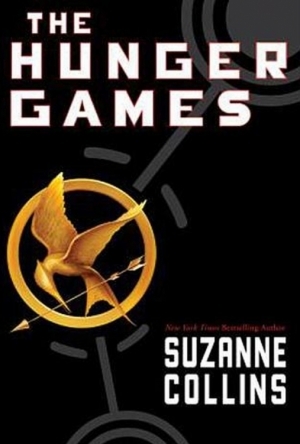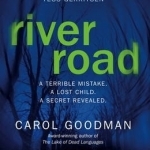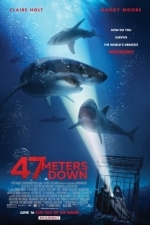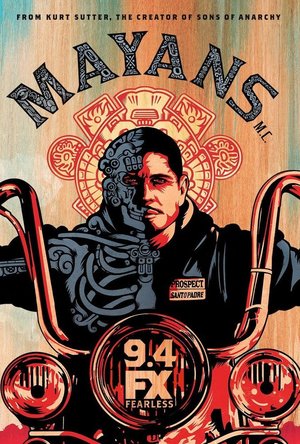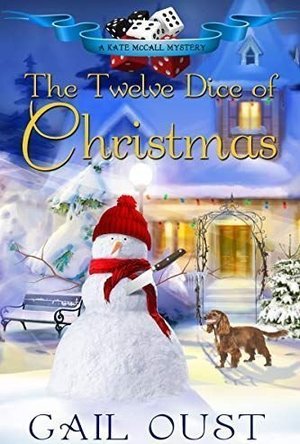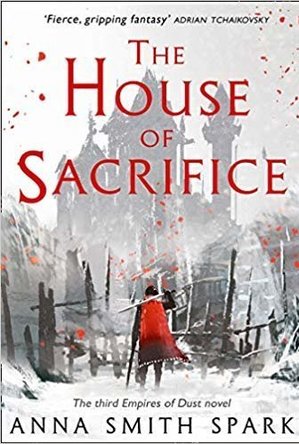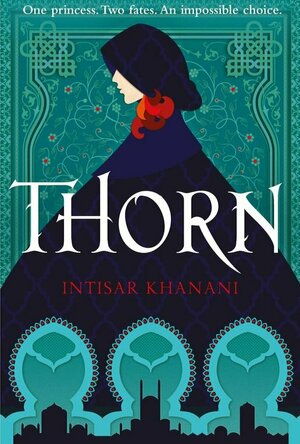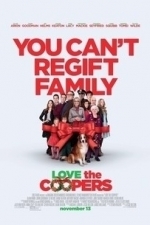Search
Search results
Rachel King (13 KP) rated The Hunger Games in Books
Feb 11, 2019
Right away this book captures my attention with a quick introduction to Katniss's survival skills followed by the District 12 Hunger Games lottery, a grim holiday that nobody wants to celebrate, but is still mandatory. It does not take long for the reader to feel sympathetic towards Katniss and the hardship she struggles with everyday just to survive.
Every detail leading up to the actual event of the Hunger Games has a surreal feel, as Katniss is primped and paraded like a beauty pageant contestant, as if everyone is ignoring the fact that these are children, with all but one facing imminent death. This is reality television meets the ancient gladiator games of Rome, combined with the sick irony of using a nation's most precious commodity -- its children. As a mother of three, I can not even fathom living in a country that tolerated this year after year. These Hunger Games are the country's way of preventing rebellion in its citizens through fear, brainwashing, and desensitization, as it is mandatory for every citizen to watch. In some districts, this is so successful that children are routinely trained specifically for the Hunger Games, volunteering to face murder and death for a chance at fame and fortune.
The love triangle is obvious early on, though the conflict can't come into play until the second book in the series. Peeta is the one in the spotlight, the one that humanizes Katniss for the viewers and makes her likable due to his own romantic feelings for her. Unfortunately, Katniss is too busy staying alive to be certain of her true feelings, even though she can pretend well enough to convince even Peeta. Peeta is self-sacrificing, while Katniss is observant and resourceful. Katniss is able to avoid becoming a cold-hearted murderer only because of Peeta's presence.
Regarding the actual Game, those that run it operate to keep the entertainment value up, adding to the danger of the contestants still alive, handing out gifts to give one an edge over another, forcing contestants into battle to increase bloodshed and drama, and generally treating the twenty-four as actors and actresses in any other fictional television drama. What Katniss keeps returning to is how "normal" these people of the Capitol see of the deaths of these children. It occurred to me while reading this that it would be better to be one of those that died in the Games, rather than live with being the monster responsible for the deaths of twenty-three other children purely for the entertainment of the shallow and self-absorbed.
This book is both shocking and heart-rending, and I look forward to the next installment, Catching Fire.
Every detail leading up to the actual event of the Hunger Games has a surreal feel, as Katniss is primped and paraded like a beauty pageant contestant, as if everyone is ignoring the fact that these are children, with all but one facing imminent death. This is reality television meets the ancient gladiator games of Rome, combined with the sick irony of using a nation's most precious commodity -- its children. As a mother of three, I can not even fathom living in a country that tolerated this year after year. These Hunger Games are the country's way of preventing rebellion in its citizens through fear, brainwashing, and desensitization, as it is mandatory for every citizen to watch. In some districts, this is so successful that children are routinely trained specifically for the Hunger Games, volunteering to face murder and death for a chance at fame and fortune.
The love triangle is obvious early on, though the conflict can't come into play until the second book in the series. Peeta is the one in the spotlight, the one that humanizes Katniss for the viewers and makes her likable due to his own romantic feelings for her. Unfortunately, Katniss is too busy staying alive to be certain of her true feelings, even though she can pretend well enough to convince even Peeta. Peeta is self-sacrificing, while Katniss is observant and resourceful. Katniss is able to avoid becoming a cold-hearted murderer only because of Peeta's presence.
Regarding the actual Game, those that run it operate to keep the entertainment value up, adding to the danger of the contestants still alive, handing out gifts to give one an edge over another, forcing contestants into battle to increase bloodshed and drama, and generally treating the twenty-four as actors and actresses in any other fictional television drama. What Katniss keeps returning to is how "normal" these people of the Capitol see of the deaths of these children. It occurred to me while reading this that it would be better to be one of those that died in the Games, rather than live with being the monster responsible for the deaths of twenty-three other children purely for the entertainment of the shallow and self-absorbed.
This book is both shocking and heart-rending, and I look forward to the next installment, Catching Fire.
graveyardgremlin (7194 KP) rated The Christmas Killer in Books
Feb 15, 2019
The Christmas Killer (aka The Dream Killer) was a Point Horror book I missed out reading when I was younger, so decided to pick it up to enjoy this holiday season (yes, I am sick). Rosecleer Potter is a normal, everyday fifteen-year-old girl who has a twin brother, Jerram, and loves to dance. She also just happens to have developed the ability to talk, through dreams, to the recently departed, which starts when an acquaintance disappears and whose body turns up murdered in the woods. Now, as the body count rises, Rose has to figure out how to use her power before the killer gets to her.
The first paragraph almost caused me to rethink my expectations of enjoyment I'd get from the book. The sentences were short and choppy, and if the whole book had been written this way, I don't think I'd have managed to get through it. Fortunately for me, it didn't turn out that way at all. Although there were more short, fragmented sentences, they were few and far between and seemed more of a style choice than anything else.
Rose was a good choice as a lead and had both positive and negative attributes to her personality. She was generally nice but could have moments of cattiness or where her temper got the best of her, which made her more believable. I can't say any of the characters are over-developed, but they are described enough to get a rough sketch of who they are as a person, and there are moments of truth in many of their actions, e.g. the mother's freaking out, the father's clamming up, and the brother's withdrawal and secretiveness. The atmosphere is done extremely well. Even though I don't remember many actual descriptions, I got the feeling of a small town, its claustrophobia, and sense of impending doom all the same.
I have to admit this book surprised me. I went in expecting more of the slasher-type YA horrors I read as a youngster, and was handed a more mature, psychological suspense horror read instead. The plot flows well and has enough clues and red herrings to keep most readers interested. As someone who has read a lot of mysteries, I did figure it out, but it could have gone many ways and still have been satisfying. The ending is the only weak point as it was a bit abrupt and maybe too open-ended, but that's a minor niggle and didn't affect my enjoyment much. As far as I've been able to tell, there is no sequel, which might be for the best. The Christmas Killer was a quick and easy chiller that kept me entertained throughout and I'd recommend it for those who like creepy teen reads.
Originally Reviewed: December 29, 2012
Received: Library
The first paragraph almost caused me to rethink my expectations of enjoyment I'd get from the book. The sentences were short and choppy, and if the whole book had been written this way, I don't think I'd have managed to get through it. Fortunately for me, it didn't turn out that way at all. Although there were more short, fragmented sentences, they were few and far between and seemed more of a style choice than anything else.
Rose was a good choice as a lead and had both positive and negative attributes to her personality. She was generally nice but could have moments of cattiness or where her temper got the best of her, which made her more believable. I can't say any of the characters are over-developed, but they are described enough to get a rough sketch of who they are as a person, and there are moments of truth in many of their actions, e.g. the mother's freaking out, the father's clamming up, and the brother's withdrawal and secretiveness. The atmosphere is done extremely well. Even though I don't remember many actual descriptions, I got the feeling of a small town, its claustrophobia, and sense of impending doom all the same.
I have to admit this book surprised me. I went in expecting more of the slasher-type YA horrors I read as a youngster, and was handed a more mature, psychological suspense horror read instead. The plot flows well and has enough clues and red herrings to keep most readers interested. As someone who has read a lot of mysteries, I did figure it out, but it could have gone many ways and still have been satisfying. The ending is the only weak point as it was a bit abrupt and maybe too open-ended, but that's a minor niggle and didn't affect my enjoyment much. As far as I've been able to tell, there is no sequel, which might be for the best. The Christmas Killer was a quick and easy chiller that kept me entertained throughout and I'd recommend it for those who like creepy teen reads.
Originally Reviewed: December 29, 2012
Received: Library
Kristy H (1252 KP) rated River Road in Books
Feb 8, 2018
Nan Lewis is a creative writing professor at a state school in upstate New York. She lives alone after the tragic death of her young daughter, Emmy--an incident which her marriage could not survive. She's recently been denied tenure by her school and is upset and agitated the university's holiday party. On her way home, she hits a deer, but cannot find the animal when she goes to check on it. Nan eventually makes it back home in a snowstorm, leaving her car at the bottom of her icy, unplowed driveway. But when she wakes in the morning, she learns that one of her prized students, Leia, was killed in a hit-and-run the night before on River Road: the exact road where Nan hit the deer. Because her car was damaged from hitting the deer, Nan is the prime suspect, and she quickly loses the support of her colleagues, who point out that she has become a functioning alcoholic since her daughter's death. Even worse, Nan starts seeing signs that remind her of Emmy's death. Are Emmy and Leia's deaths related? How much did Nan have to drink the night she hit the deer? Will she clear her name before her entire life is destroyed?
I'm honestly not sure why I enjoyed this book as much as I did. It had several things working against it: 1) an unlikable narrator who drinks heavily; 2) a storyline that heavily involved dead children and pets (why?!); and 3) an easily guessed villain. Still, I found this one compulsively readable and stayed up far past my bedtime to finish the second half of the book. Nan grew on me, and I found myself almost protective of her. The lead policeman in the novel, Joe, was a favorite of mine. While I figured out the villain fairly early, I didn't understand the motives, so the plot kept me guessing until the end. Goodman weaves several storylines together--which intersect, but loosely--and somehow they all work. There are several supporting characters, including the woman who killed Nan's daughter and a young single mother from one of Nan's classes, who give the novel a surprising depth.
Anyway, despite some of the craziness, I found myself enjoying the book and racing to finish it. I first fell in love with Goodman due to her novel [b:The Lake of Dead Languages|120274|The Lake of Dead Languages|Carol Goodman|https://d.gr-assets.com/books/1320554718s/120274.jpg|3159707]. That book was impressive and still sits on my bookshelf to this day. If you haven't read it, I certainly recommend it. However, [b:River Road|25111007|River Road|Carol Goodman|https://d.gr-assets.com/books/1454544060s/25111007.jpg|44804735] is a fun thriller and a worthy diversion.
I'm honestly not sure why I enjoyed this book as much as I did. It had several things working against it: 1) an unlikable narrator who drinks heavily; 2) a storyline that heavily involved dead children and pets (why?!); and 3) an easily guessed villain. Still, I found this one compulsively readable and stayed up far past my bedtime to finish the second half of the book. Nan grew on me, and I found myself almost protective of her. The lead policeman in the novel, Joe, was a favorite of mine. While I figured out the villain fairly early, I didn't understand the motives, so the plot kept me guessing until the end. Goodman weaves several storylines together--which intersect, but loosely--and somehow they all work. There are several supporting characters, including the woman who killed Nan's daughter and a young single mother from one of Nan's classes, who give the novel a surprising depth.
Anyway, despite some of the craziness, I found myself enjoying the book and racing to finish it. I first fell in love with Goodman due to her novel [b:The Lake of Dead Languages|120274|The Lake of Dead Languages|Carol Goodman|https://d.gr-assets.com/books/1320554718s/120274.jpg|3159707]. That book was impressive and still sits on my bookshelf to this day. If you haven't read it, I certainly recommend it. However, [b:River Road|25111007|River Road|Carol Goodman|https://d.gr-assets.com/books/1454544060s/25111007.jpg|44804735] is a fun thriller and a worthy diversion.
Darren (1599 KP) rated 47 Meters Down (2017) in Movies
Jun 20, 2019
Story: 47 Meters Down starts as two sisters Lisa (Moore) and Kate (Holt) are holidaying in Mexico with Lisa trying to get over her ex, the two look to have a good time. Two locals Benjamin (Segura), Louis (Gellman) talk the girls into joining Captain Taylor (Modine) on the Sea Esta to swim with sharks.
When the dream experience for the girls turns into a nightmare when the cable holding the cage snaps, sending them both trapped in the cage 47 metres to the bottoms of the ocean, the two must stay calm and wait for rescue but do they have the air to wait that long?
Thoughts on 47 Meters Down
Characters/Performance – Lisa is the stable one of the two sisters, she doesn’t take the risks her sister does and finds herself using this holiday to follow her sisters lead. Kate is the free spirited of the two sisters that enjoys taking risk and will not be saying no to an adventure. We do have a captain and his crew too but we barely see them.
Performance wise, Holt and Moore are fine, you don’t actually believe them to be sisters and the peril they find themselves in doesn’t seem to be anything overly fresh in performance eyes.
Story – The story does offer us something fresh when it comes to the shark attack genre, the film takes place underwater instead of on the surface as the girls are trapped at the bottom of the ocean. The problem using this situation is that the near death moments just don’t come off, for example we have a good 5 minutes sequence with one of the girls trying to drag an oxygen tank closer, now this happens too early in the film for us to believe that she might die. On the surface this is a good idea and does work but puts together the maybes too far apart.
Adventure/Horror – The adventure would be about what the two girls could be experiencing with the horror being how this adventure could go horribly wrong with shark attack happening.
Settings – The bottom of the ocean in a shark cage, well this is a new and brilliant setting for the movie and is easily the highlight of everything.
Special Effects – The effects are used to create the shark attack sequences which are all filled with terror.
Final Thoughts – This is a fresh approach to the shark attack movie, it is smartly created but does lack in the idea of peril which the surface has on the higher levels.
Overall: Shark attack movie with new breath but less teeth.
https://moviesreview101.com/2017/07/03/47-meters-down-2017/
When the dream experience for the girls turns into a nightmare when the cable holding the cage snaps, sending them both trapped in the cage 47 metres to the bottoms of the ocean, the two must stay calm and wait for rescue but do they have the air to wait that long?
Thoughts on 47 Meters Down
Characters/Performance – Lisa is the stable one of the two sisters, she doesn’t take the risks her sister does and finds herself using this holiday to follow her sisters lead. Kate is the free spirited of the two sisters that enjoys taking risk and will not be saying no to an adventure. We do have a captain and his crew too but we barely see them.
Performance wise, Holt and Moore are fine, you don’t actually believe them to be sisters and the peril they find themselves in doesn’t seem to be anything overly fresh in performance eyes.
Story – The story does offer us something fresh when it comes to the shark attack genre, the film takes place underwater instead of on the surface as the girls are trapped at the bottom of the ocean. The problem using this situation is that the near death moments just don’t come off, for example we have a good 5 minutes sequence with one of the girls trying to drag an oxygen tank closer, now this happens too early in the film for us to believe that she might die. On the surface this is a good idea and does work but puts together the maybes too far apart.
Adventure/Horror – The adventure would be about what the two girls could be experiencing with the horror being how this adventure could go horribly wrong with shark attack happening.
Settings – The bottom of the ocean in a shark cage, well this is a new and brilliant setting for the movie and is easily the highlight of everything.
Special Effects – The effects are used to create the shark attack sequences which are all filled with terror.
Final Thoughts – This is a fresh approach to the shark attack movie, it is smartly created but does lack in the idea of peril which the surface has on the higher levels.
Overall: Shark attack movie with new breath but less teeth.
https://moviesreview101.com/2017/07/03/47-meters-down-2017/
Daniel Boyd (1066 KP) rated Mayans MC in TV
Jan 8, 2019 (Updated Jan 8, 2019)
Hijos de la Anarquía
Funnily enough, my girlfriend and I were actually on Holiday in Mexico when this show premiered back in September. Although I was excited to see it since it was announced as I am a big fan of the original SOA series, because we were away when it first aired and we had a bunch to catch up on when we got back, I only recently made my way through the first series of Mayans. Also, just as a heads up, because this is a spinoff of SOA, I will be making a lot of comparisons to the OG show throughout my review.
Mayans follows EZ Reyes, a prospect for the Mayans Motorcycle Club. His older brother is a full patch and is responsible for getting him involved with the biker gang. The series takes place a few years after, (SPOILERS FOR SOA,) the death of Jax Teller. EZ is far less involved with his club than Jax was. Due to Jax's heritage, he was destined to be a part of the SOA, but most of EZ's problems come from outside the club or from his murky past.
In fact, most of the issues that characters deal with in the show, come from problems outside the club, whereas the first season of SOA dealt far more with club problems and established the group of men as more of a family unit, much more so than the Mayans. This change isn't necessarily a bad thing, it's just different and I wonder if it was a conscience change to differentiate the show from SOA or if it was due to the addition of Kurt Sutter's new writing partner Elgin James.
Speaking of the writing, it is as tight here as it ever was in SOA. Kurt Sutter is an absolute genius with a pen, taking the audience from generic biker dialogue one minute to deep family crisis' and existential questions the next. The one major change is the use of flashbacks in this series. As far as I can recall, although SOA spent a lot of time talking about Jax's family history, we never actually saw any flashbacks, but Mayans is full of them. This is based around the gimmick of EZ having a photographic memory. Personally I don't mind gimmicks like this in writing as long as they are executed well and for the most part, they do serve the story that Mayans is trying to tell.
Overall, I enjoyed the first series of Mayans and I am looking forward to seeing where the show will go in future after having been renewed for a second season.
Mayans follows EZ Reyes, a prospect for the Mayans Motorcycle Club. His older brother is a full patch and is responsible for getting him involved with the biker gang. The series takes place a few years after, (SPOILERS FOR SOA,) the death of Jax Teller. EZ is far less involved with his club than Jax was. Due to Jax's heritage, he was destined to be a part of the SOA, but most of EZ's problems come from outside the club or from his murky past.
In fact, most of the issues that characters deal with in the show, come from problems outside the club, whereas the first season of SOA dealt far more with club problems and established the group of men as more of a family unit, much more so than the Mayans. This change isn't necessarily a bad thing, it's just different and I wonder if it was a conscience change to differentiate the show from SOA or if it was due to the addition of Kurt Sutter's new writing partner Elgin James.
Speaking of the writing, it is as tight here as it ever was in SOA. Kurt Sutter is an absolute genius with a pen, taking the audience from generic biker dialogue one minute to deep family crisis' and existential questions the next. The one major change is the use of flashbacks in this series. As far as I can recall, although SOA spent a lot of time talking about Jax's family history, we never actually saw any flashbacks, but Mayans is full of them. This is based around the gimmick of EZ having a photographic memory. Personally I don't mind gimmicks like this in writing as long as they are executed well and for the most part, they do serve the story that Mayans is trying to tell.
Overall, I enjoyed the first series of Mayans and I am looking forward to seeing where the show will go in future after having been renewed for a second season.
Midge (525 KP) rated The Twelve Dice of Christmas in Books
Dec 10, 2018
I adore a new book, and if it’s part of a series, that's great, as it means more books for me to read!
Welcome to Serenity Cove, a peaceful Southern community where the residents like to play dice, and when there is a dark mystery, play detective.
With Christmas fast approaching, Kate McCall and her retired friends get into the holiday spirit by agreeing to help the elderly Eula Mae Snow decorate her home, even when it means sorting through many of the older woman’s belongings. Intent on doing a good deed and uncovering a bright collection of seasonal decorations, Kate is stopped dead in her tracks when instead she discovers the skeleton of a man showing clear signs of foul play.
Many in Serenity Cove thought that Waylon Snow had run off and left town and his wife, Eula Mae, more than two decades earlier. But with the appearance of his skeleton and a whole host of clues pointing to Eula Mae as the murderer, Kate will have to put her sleuthing skills to work to figure out who could have committed the evil deed.
Kate and her retired friends, known as The Bunco Babes, are feeling festive and they are planning a cookie exchange and ugly sweater contest for their last dice game session of the season. As they plan their holidays, they decide to help their friend decorate her house for the annual charity Christmas Home Tour. The Bunco Babes get cracking, and in the process of hunting for the Christmas decorations, Kate discovers the skeleton in the root cellar. Kate now has a twenty-five-year-old mystery to contend with. Can she solve it?
This is my first novel by Gail Oust and I really enjoyed it. I love that it is an old mystery set in Christmastime. Although this is the fourth book in a mystery series, you do not need to have read the previous books in sequence to be able to follow the story properly.
I found many of the characters very funny and easy to relate to, particularly Kate herself, but also Eula Mae's granddaughter, Tammy Lynn and Bill Lewis, Kate's "significant other". Many of the other characters in the book were extremely amusing and unusual. Kate and the Town Sheriff, Sheriff Wiggins have history, Although he is not in Kate's fan club, can she use her powers of persuasion on him to allow the Bunco Babes into the house in time for it to be decorated for the Christmas Home Tour?
You’ll treasure this sweet Christmas mystery, as I did!
Thanks to Netgalley and Beyond the Page Publishing for a copy of this book.
Welcome to Serenity Cove, a peaceful Southern community where the residents like to play dice, and when there is a dark mystery, play detective.
With Christmas fast approaching, Kate McCall and her retired friends get into the holiday spirit by agreeing to help the elderly Eula Mae Snow decorate her home, even when it means sorting through many of the older woman’s belongings. Intent on doing a good deed and uncovering a bright collection of seasonal decorations, Kate is stopped dead in her tracks when instead she discovers the skeleton of a man showing clear signs of foul play.
Many in Serenity Cove thought that Waylon Snow had run off and left town and his wife, Eula Mae, more than two decades earlier. But with the appearance of his skeleton and a whole host of clues pointing to Eula Mae as the murderer, Kate will have to put her sleuthing skills to work to figure out who could have committed the evil deed.
Kate and her retired friends, known as The Bunco Babes, are feeling festive and they are planning a cookie exchange and ugly sweater contest for their last dice game session of the season. As they plan their holidays, they decide to help their friend decorate her house for the annual charity Christmas Home Tour. The Bunco Babes get cracking, and in the process of hunting for the Christmas decorations, Kate discovers the skeleton in the root cellar. Kate now has a twenty-five-year-old mystery to contend with. Can she solve it?
This is my first novel by Gail Oust and I really enjoyed it. I love that it is an old mystery set in Christmastime. Although this is the fourth book in a mystery series, you do not need to have read the previous books in sequence to be able to follow the story properly.
I found many of the characters very funny and easy to relate to, particularly Kate herself, but also Eula Mae's granddaughter, Tammy Lynn and Bill Lewis, Kate's "significant other". Many of the other characters in the book were extremely amusing and unusual. Kate and the Town Sheriff, Sheriff Wiggins have history, Although he is not in Kate's fan club, can she use her powers of persuasion on him to allow the Bunco Babes into the house in time for it to be decorated for the Christmas Home Tour?
You’ll treasure this sweet Christmas mystery, as I did!
Thanks to Netgalley and Beyond the Page Publishing for a copy of this book.
Ross (3284 KP) rated House of Sacrifice in Books
Aug 14, 2019
Style over substance in a long grind of a conclusion
* I received an advance copy of this book from the publishers and NetGalley in exchange for an honest review *
Anna Smith Spark broke onto the scene with The Court of Broken Knives (which always annoyed me because the place in the book is named the Court of the Broken Knife), a truly dark and gritty fantasy tale mixing magic, ambition, political intrigue and good old fashion hacking limbs off with blunted swords. Her narrative tone made her debut stand out, being much more lyrical and poetic than the rest of the genre. While this took time to get used to, it added to the immersion of the story and made the reader feel like they were experiencing the conflict themselves. The lyrical prose added to the underlying story. This continued into the second book, where Marith's journey to taking over/destroying the world continued, as did the turmoil in the heart of the empire.
Here, however, the story seems to have been put on the back-burner in favour of more literary prose. A whole lot of not a lot happens. While a large chunk of this is in favour of some character development, it is laboured and a real slog. I hated the first quarter of the book, and while I could see that what little was happening would be important in telling Marith's story, it really did take forever and was so utterly rammed home that I found it frustrating. So much so that I had to put the book aside so that my mood didn't ruin my family holiday.
The book serves as something of a conclusion to the trilogy with a lot of wrongs righted and paths ended. However, so much of it is simply gratuitous war for the sake of war (which I get as part of Marith's character but I grasped that after the first couple of unnecessary towns were razed).
However, with less of import happening, the reader starts to focus on the world-building, and I certainly started to realise how little of the "magic" in the world was explained or even described. So many instances of "shadowbeasts" just appearing and I cannot remember them being introduced in any detail at all. I really couldn't remember what was so special about Marith after all.
And the ending was so much of a damp squib I just had to laugh. After everything Marith had been through, for that to be the ending was ludicrous. While I appreciated the circularity of it, I didn't like it.
A disappointing case of style over substance in this dragged out ending to a series that could easily have squeezed into two book.
Anna Smith Spark broke onto the scene with The Court of Broken Knives (which always annoyed me because the place in the book is named the Court of the Broken Knife), a truly dark and gritty fantasy tale mixing magic, ambition, political intrigue and good old fashion hacking limbs off with blunted swords. Her narrative tone made her debut stand out, being much more lyrical and poetic than the rest of the genre. While this took time to get used to, it added to the immersion of the story and made the reader feel like they were experiencing the conflict themselves. The lyrical prose added to the underlying story. This continued into the second book, where Marith's journey to taking over/destroying the world continued, as did the turmoil in the heart of the empire.
Here, however, the story seems to have been put on the back-burner in favour of more literary prose. A whole lot of not a lot happens. While a large chunk of this is in favour of some character development, it is laboured and a real slog. I hated the first quarter of the book, and while I could see that what little was happening would be important in telling Marith's story, it really did take forever and was so utterly rammed home that I found it frustrating. So much so that I had to put the book aside so that my mood didn't ruin my family holiday.
The book serves as something of a conclusion to the trilogy with a lot of wrongs righted and paths ended. However, so much of it is simply gratuitous war for the sake of war (which I get as part of Marith's character but I grasped that after the first couple of unnecessary towns were razed).
However, with less of import happening, the reader starts to focus on the world-building, and I certainly started to realise how little of the "magic" in the world was explained or even described. So many instances of "shadowbeasts" just appearing and I cannot remember them being introduced in any detail at all. I really couldn't remember what was so special about Marith after all.
And the ending was so much of a damp squib I just had to laugh. After everything Marith had been through, for that to be the ending was ludicrous. While I appreciated the circularity of it, I didn't like it.
A disappointing case of style over substance in this dragged out ending to a series that could easily have squeezed into two book.
Gareth von Kallenbach (980 KP) rated 6 Underground (2019) in Movies
Dec 15, 2019
It’s a Michael Bay film. It’s going to have so many car crashes, explosions, stunts and more of the same. Seriously. It’s Michael Bay…AND Ryan Reynolds. With the script by Rhett Reese and Paul Wernick, who both have worked on Zombieland, Deadpool 1 & 2. Just to clarify, this IS an action movie. It surprises me that it was released at this time of year. I would have thought the typical release would head off the summer blockbuster season. However, Netflix has been sending out an eclectic group of movies to premiere in theaters prior to its streaming release.
The premise that we are set up for: super rich billionaire, Number One (Ryan Reynolds) has curated a team with members that each have a specific set of skills. The small team of specialists are all ghosts in the real world. The work that they do requires the anonymity of nonexistence. Each member of the six -person team have been chosen by Number One. Number Two (Melanie Laurent) is a former CIA Operative, Number Three (Manuel Garcia Rulfo) the very talented assassin, Number Four (Adria Arjona) is the Doctor. She is the one who can remove a bullet while the car is dodging through the traffic at breakneck speed. Number five (Ben Hardy, last seen in Bohemian Rhapsody as Roger Taylor) who is the parkour king. Rounding out the team is Number Six (Dave Franco) the Driver.
To say some parts of the film was subdued would have some people raise their collective eyebrows. However, the characters (Numbers Two to Six), have taken on the witty quips that we, as an audience have long associated with Ryan Reynolds. The writers have dispersed the wit and sarcasm to the other team members. This also helps to provide the comradery and establish the “family” concept that bonds the disparate backgrounds of each member. We are privy to a little bit of information of each team member, but I would have liked to see a little bit more history of each to fill in the personal motivation.
I enjoyed all the car chases, explosions, stunts and the international sites. It’s definitely not the typical fare of the holiday season in the theaters, but it is a very fun action movie that shoots the viewer through the story. The pacing is steady, the humor is a little sarcastic with a side of gentle familial teasing.
If you have had enough of the warm and fuzzies that the season provides in plentitude, Six Underground is a welcomed palate cleanser in this time of Yule. I certainly hope we get to see more of this team in a sequel.
4 out of 5 stars
The premise that we are set up for: super rich billionaire, Number One (Ryan Reynolds) has curated a team with members that each have a specific set of skills. The small team of specialists are all ghosts in the real world. The work that they do requires the anonymity of nonexistence. Each member of the six -person team have been chosen by Number One. Number Two (Melanie Laurent) is a former CIA Operative, Number Three (Manuel Garcia Rulfo) the very talented assassin, Number Four (Adria Arjona) is the Doctor. She is the one who can remove a bullet while the car is dodging through the traffic at breakneck speed. Number five (Ben Hardy, last seen in Bohemian Rhapsody as Roger Taylor) who is the parkour king. Rounding out the team is Number Six (Dave Franco) the Driver.
To say some parts of the film was subdued would have some people raise their collective eyebrows. However, the characters (Numbers Two to Six), have taken on the witty quips that we, as an audience have long associated with Ryan Reynolds. The writers have dispersed the wit and sarcasm to the other team members. This also helps to provide the comradery and establish the “family” concept that bonds the disparate backgrounds of each member. We are privy to a little bit of information of each team member, but I would have liked to see a little bit more history of each to fill in the personal motivation.
I enjoyed all the car chases, explosions, stunts and the international sites. It’s definitely not the typical fare of the holiday season in the theaters, but it is a very fun action movie that shoots the viewer through the story. The pacing is steady, the humor is a little sarcastic with a side of gentle familial teasing.
If you have had enough of the warm and fuzzies that the season provides in plentitude, Six Underground is a welcomed palate cleanser in this time of Yule. I certainly hope we get to see more of this team in a sequel.
4 out of 5 stars
James Koppert (2698 KP) rated Thorn in Books
Mar 29, 2020
A Phenomenon
There are some young adults books, Harry Potter, Letter for the King, His Dark Materials that can be translated through the languages of the world and for decades or more, be held up as classics of young literature, deserved to be read and bring joy for all ages. Thorn deserves to be held up in equal company as these. I won't beat about the bush, this is an exceptional, beautiful entertaining tale deserving to be a global best-seller for many many years. If you read my reviews I don't thrust such extreme praise on everything I read, but Thorn is the type of book you end up taking a days holiday off work just to carry on engaging with this wonderful story.
Intisar Khanani is a very special writer, like Neil Gaiman, she takes the world and weaves an understated thread of magic and fantasy into the story that provides an undercurrent which bubbles to the surface. The fact it is understated brings you a acceptance without question of the world you are reading, so magic spells and talking horses are as accepted as characters eating a meal. Intisar Khanani's writing flows effortlessly. When you are reading a true master of the art, they write in a way where you forget you are reading at all and are simply viewing a world from the pages. This is such a book.
Thorn contains very human characters who you will feel a deep tenderness for. It contains morality and dilemma asking you to question whether you put your happiness first or the duty of bettering the world? What is justice and rule? Do you seek justice through revenge or lessons as just a few. Yet these moralities are not there to beat you round the head, they are part of the grain of the story where you raise the questions alongside that of the adorable lead character whose gentle female strength is ferocious, again in a beautifully subtle way.
I don't want to give away any of the plot, I want you t pick up the book and let it unravel before your eyes like I did. Be wicked away into a rich multicultural world full of what i hope are many stories yet to be told.
Thorn may not just be the best young adult book of the decade, it could well be one of the best fantasy novels as well, that will be read and then re-read for the next few decades and beyond. Intisar Khanani is about to be a global superstar and deserves every particle of light the spotlight is made up of shining on her.
Intisar Khanani is a very special writer, like Neil Gaiman, she takes the world and weaves an understated thread of magic and fantasy into the story that provides an undercurrent which bubbles to the surface. The fact it is understated brings you a acceptance without question of the world you are reading, so magic spells and talking horses are as accepted as characters eating a meal. Intisar Khanani's writing flows effortlessly. When you are reading a true master of the art, they write in a way where you forget you are reading at all and are simply viewing a world from the pages. This is such a book.
Thorn contains very human characters who you will feel a deep tenderness for. It contains morality and dilemma asking you to question whether you put your happiness first or the duty of bettering the world? What is justice and rule? Do you seek justice through revenge or lessons as just a few. Yet these moralities are not there to beat you round the head, they are part of the grain of the story where you raise the questions alongside that of the adorable lead character whose gentle female strength is ferocious, again in a beautifully subtle way.
I don't want to give away any of the plot, I want you t pick up the book and let it unravel before your eyes like I did. Be wicked away into a rich multicultural world full of what i hope are many stories yet to be told.
Thorn may not just be the best young adult book of the decade, it could well be one of the best fantasy novels as well, that will be read and then re-read for the next few decades and beyond. Intisar Khanani is about to be a global superstar and deserves every particle of light the spotlight is made up of shining on her.
Gareth von Kallenbach (980 KP) rated Love the Coopers (2015) in Movies
Aug 6, 2019
Love the Coopers is a new movie directed by Jessie Nelson and released
through the collaborative efforts of CBS Films, Groundswell Productions
and Imagine Entertainment.
It has a large and recognizable cast of characters, including Dianne
Keaton (Charlotte), John Goodman (Sam), Ed Helms (Hank), Alan Arky
(Bucky), Marisa Tomei (Emma), Olivia Wilde (Eleanor), June Squibb (Aunt
Fishy) and Steve Martin (the dog, Rags!).
Based on the previews and trailers that I saw, I expected more laugh out
loud comedy than I got out of the film. There was plenty of laugh out
loud comedy, don’t get me wrong, but what I expected out of the trailers
was a “dumb” comedy, rather than a poignant, rather touching (and at
times tragic) love story wrapped up in a comedy.
The basic premise is that Mom Charlotte and dad Sam want to have “one
last” family holiday full of happiness and good cheer and wonderful
memories, before they drop the bombshell on their family that they will
be splitting up after 40 years of marriage.
Charlotte has spent her whole marriage keeping the family together,
making sure everyone is “ok” and of course, as frequently happens, has
grown distant from her spouse Sam in the midst of that.
The story is told from the point of view of Rags the family dog (voiced
by Steve Martin) who has watched the family grow together and then
apart, through the years.
I thoroughly enjoyed the movie, and thought that it was a good story
that showed how a family dynamic can change over the years and how it
isn’t always in the best of ways. It also portrayed how family
relationships are perceived from the point of view of the people that
are actually IN the relationship, as well as from an outsiders’ view.
Some parts were “cheesy” but for the most part, I was really able to
connect with the story as a whole. Even though some of the intertwining
story lines by themselves were a little dis-jointed, when they all came
together under the umbrella of the main story line, somehow, it just
worked.
I liked that I connected emotionally with Charlotte and could FEEL her
connection to her kids and how she loved them “bigger than anything” and
just wanted what was best for them, even though it didn’t always come
out that way, and even though it distanced her from her husband. I think
that happens “in the real world”, a lot more than people realize or
think about.
The movie made me laugh, and it made me cry… It occasionally made me
groan in a “Really?! Did they have to do THAT??” sort of way, too, but
overall I really enjoyed it.
I would give the movie 3.5 out of 5 stars.
through the collaborative efforts of CBS Films, Groundswell Productions
and Imagine Entertainment.
It has a large and recognizable cast of characters, including Dianne
Keaton (Charlotte), John Goodman (Sam), Ed Helms (Hank), Alan Arky
(Bucky), Marisa Tomei (Emma), Olivia Wilde (Eleanor), June Squibb (Aunt
Fishy) and Steve Martin (the dog, Rags!).
Based on the previews and trailers that I saw, I expected more laugh out
loud comedy than I got out of the film. There was plenty of laugh out
loud comedy, don’t get me wrong, but what I expected out of the trailers
was a “dumb” comedy, rather than a poignant, rather touching (and at
times tragic) love story wrapped up in a comedy.
The basic premise is that Mom Charlotte and dad Sam want to have “one
last” family holiday full of happiness and good cheer and wonderful
memories, before they drop the bombshell on their family that they will
be splitting up after 40 years of marriage.
Charlotte has spent her whole marriage keeping the family together,
making sure everyone is “ok” and of course, as frequently happens, has
grown distant from her spouse Sam in the midst of that.
The story is told from the point of view of Rags the family dog (voiced
by Steve Martin) who has watched the family grow together and then
apart, through the years.
I thoroughly enjoyed the movie, and thought that it was a good story
that showed how a family dynamic can change over the years and how it
isn’t always in the best of ways. It also portrayed how family
relationships are perceived from the point of view of the people that
are actually IN the relationship, as well as from an outsiders’ view.
Some parts were “cheesy” but for the most part, I was really able to
connect with the story as a whole. Even though some of the intertwining
story lines by themselves were a little dis-jointed, when they all came
together under the umbrella of the main story line, somehow, it just
worked.
I liked that I connected emotionally with Charlotte and could FEEL her
connection to her kids and how she loved them “bigger than anything” and
just wanted what was best for them, even though it didn’t always come
out that way, and even though it distanced her from her husband. I think
that happens “in the real world”, a lot more than people realize or
think about.
The movie made me laugh, and it made me cry… It occasionally made me
groan in a “Really?! Did they have to do THAT??” sort of way, too, but
overall I really enjoyed it.
I would give the movie 3.5 out of 5 stars.
